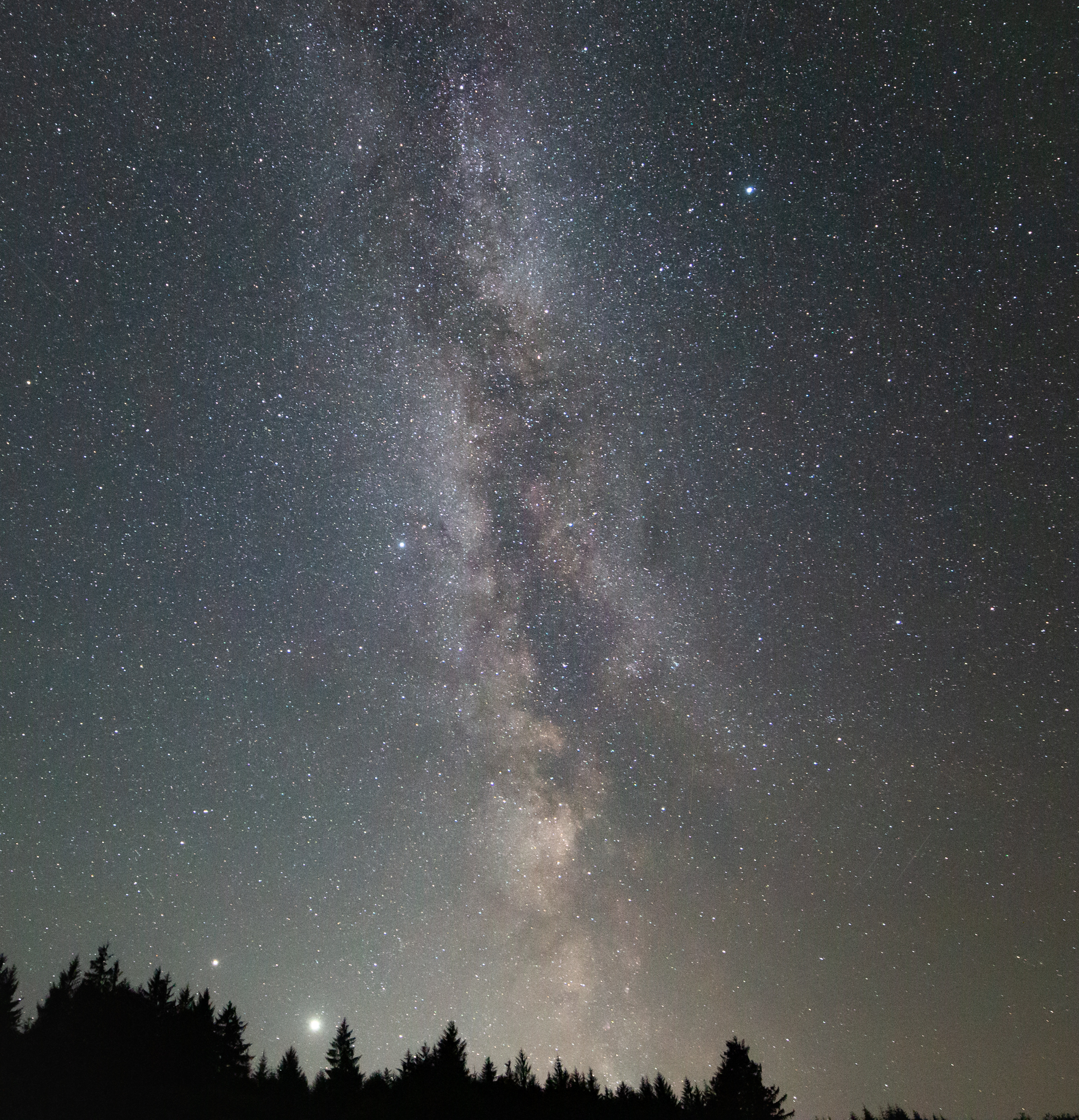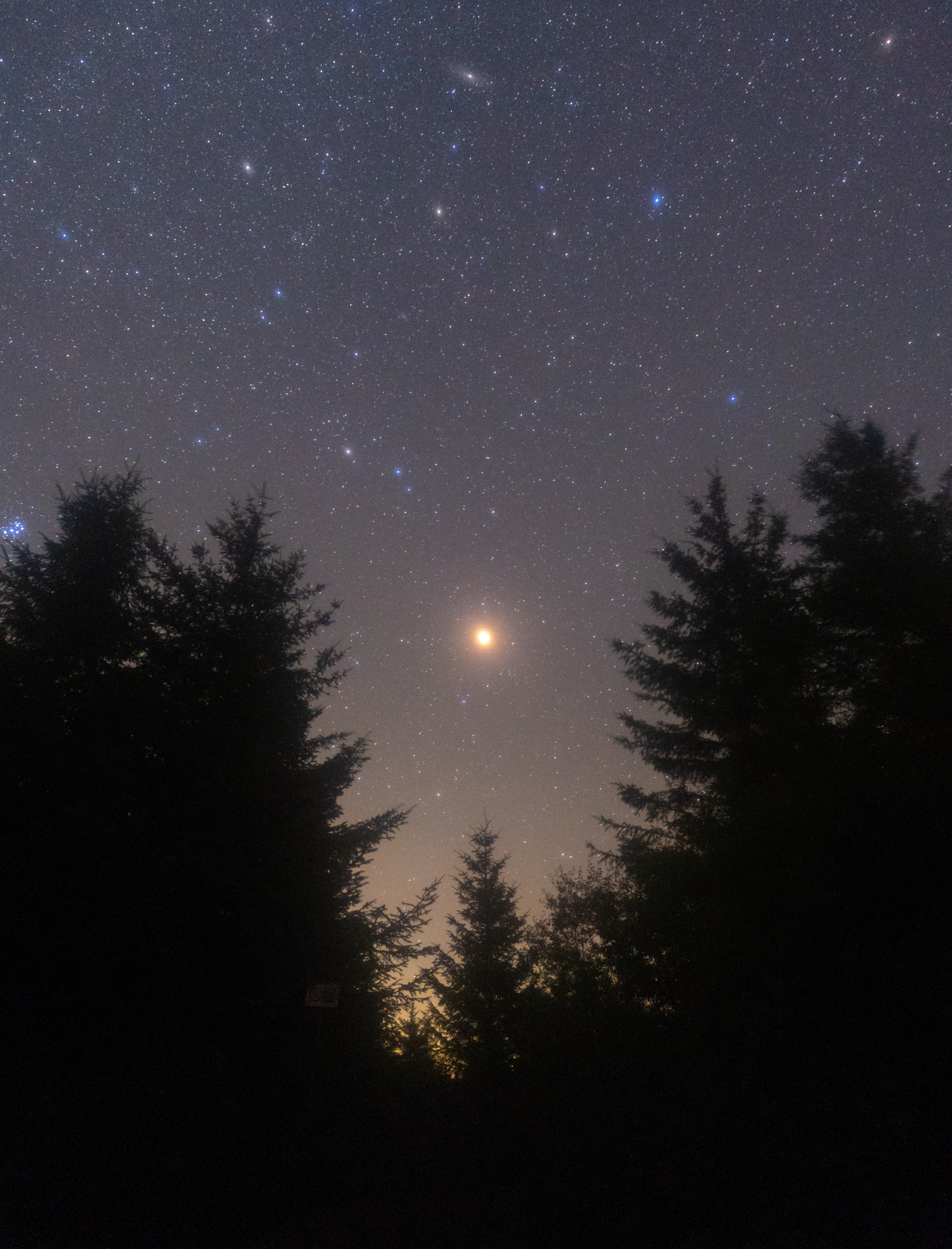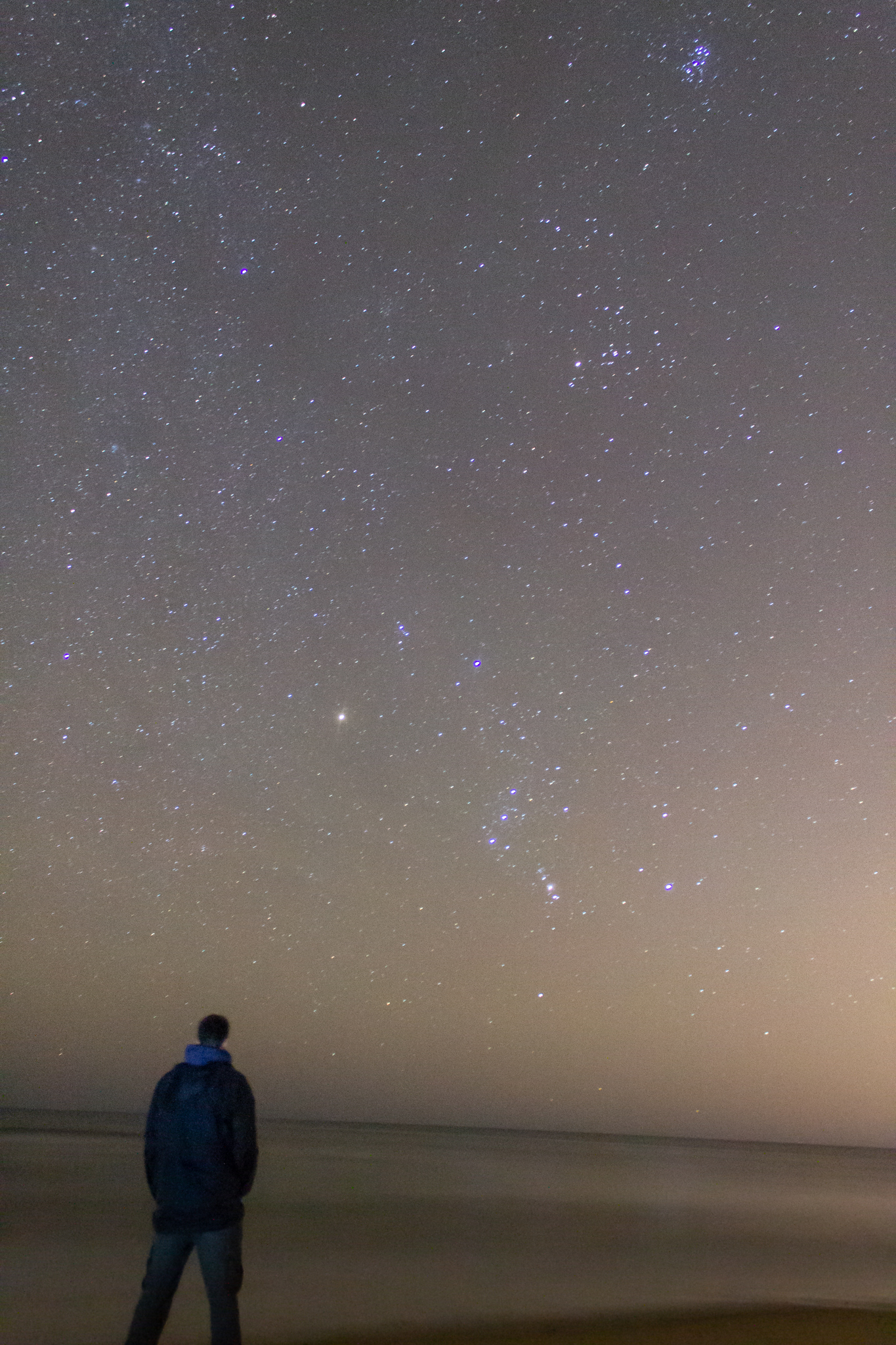As the darker evenings and longer, autumn nights return, October’s night sky has plenty of exciting celestial objects for you to see, without the need for any equipment.
The planets of our Solar System
Planet hunters are in for a real treat this month!
October is the perfect month to see the red planet. Mars is at “opposition” this month, which means that the Earth and Mars are at their closest point to each other in their orbits around the Sun. Outshining even the brightest stars throughout the night, the unmistakable red hue of the planet Mars makes this a real must-see this month. It can be seen rising in the east at around 8pm, will be at its highest in the south at around 1am, and early risers will see it setting in the western sky before dawn.
Other than the Moon, the only thing brighter than Mars in the night sky this month is the planet Venus, which can be seen rising in the east before dawn. Set your alarm clocks early on the morning of 14 October to see Venus and a 10%-illuminated slice of Moon rising about three hours before sunrise.

Meanwhile, you may have spotted two bright objects low in the south after sunset over the last couple of months. These are the gas giants Jupiter and Saturn. Although they were at their closest to Earth back in the summer, anyone with a small telescope will still be able to observe four of Jupiter’s largest moons, as well as the rings of Saturn. These giants of the night sky will stay with us for another couple of months, building up to a very rare and exciting event in December – but more on that in future blogs!
Did you know? At last count, Jupiter has 79 moons!
The night sky’s brightest galaxy: Andromeda
The Andromeda galaxy, (also known as Messier 31) is 2.5 million light years away, but the collective light of the 1 trillion stars within it means it is visible to us as a faint fuzzy patch of light – the most distant object visible to the naked eye.
You’ll need to get away from any bright city lights to see it, but throughout October, Andromeda can be seen high in the sky above the planet Mars and the distinctive open star cluster, the Pleiades, also known as the Seven Sisters.
The Andromeda Galaxy is currently on a collision course with our own galaxy, the Milky Way. It is hurtling towards us at over 100 kilometres (over 60 miles) per second, but don’t worry, it is so far away that it won’t get here for another four to five billion years!

Meteor showers
If all of that wasn’t enough for you, October hosts the Orionids meteor shower, which occurs as the Earth passes through the debris trail of dust, ice and rock left by Halley’s Comet. Although the comet last passed through the inner solar system in 1986 (and it is currently out beyond the orbit of Neptune), the trail of fragments it left behind remains, and when these fragments fall into our atmosphere, they burn up, zipping through our night sky as what we call “shooting stars”.
Most of the fragments are no bigger than a pea, but just occasionally, slightly larger chunks can cause blazing fireballs across the sky – a truly spectacular sight that you’ll never forget!
While the meteor shower could be visible throughout October and into early November, the best time to see the Orionids will be around 20 – 21 October.
Over the past few nights, there’s also been a ‘quieter’ meteor shower called the Draconids – did you catch any shooting stars? There’s typically fewer visible meteors for this one, but the number of meteors in any shower can change each year, so it’s always worth heading outside to take a look! They should still be visible for the next day or two.

Once in a Blue Moon
October starts and ends with a full moon in our night skies, with the second occurrence called a ‘blue moon’, that only happens every two to three years.
Observing tips
Get away from bright lights: If you want to see more stars and faint objects such as the Andromeda Galaxy, get as far away from sources of light as you can, such as houses, streets and cars. The light from these can drown out the faint light from distant celestial objects.
Check the moon’s phase: Even the moon can make it harder to spot faint objects, so check the phase of the moon and (unless you want to see the moon!) opt for nights closer to new moon, when the night sky will be darker.
Give your eyes time to adapt: Once you’re away from sources of light, it can take about 20 – 30 minutes for your eyes to become accustomed to the darkness. You’ll be able to see more stars if you take your time, and avoid looking at lights (including your mobile phone screen) while you’re outside.
Wrap up warm: If you haven’t already, it’s time to get the winter coat and hat out, and wear plenty of layers to conserve your heat.
Find a place where you can see the horizon: In towns and cities, much of our night sky is often obscured by nearby buildings. Head to the top of a nearby hill so that you can see more of the sky.
Get comfortable: you’ll notice more if you’re relaxed, so consider taking a chair to sit on, or a blanket to lie on.
Wishing you clear skies!
Leave a comment